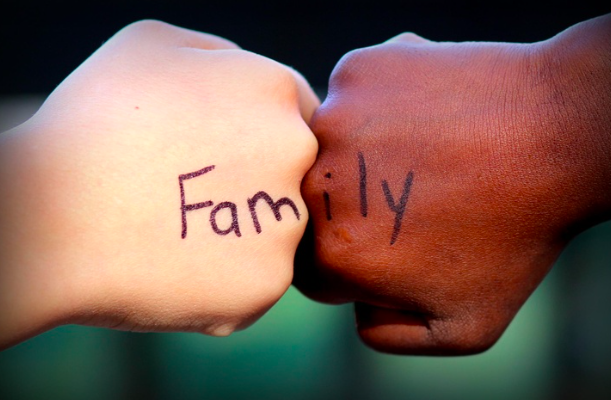
Rituals and ceremonies are symbolic forms of communication that incorporate participant’s histories and traditions. Some like Christmas, anniversaries, weddings and funerals are shared across families and cultures; others are more individual and private. Some are celebrated yearly and some only once.
Rituals and ceremonies function as benchmarks, guideposts, and bridges for events in people’s lives. For foster and adoptive families, rituals and ceremonies help clarify and maintain relationships in open adoptions. Ceremonies have also helped children and their families make sense of difficult life transitions and can assist with creating stability for families who are confronting heavy emotional turmoil. They can assist in expressing and releasing such emotions as grief, anger and confusion toward a situation or person; create containers for memories so they do not obstruct efforts to create a new family; change the environment in which a family functions; and allows for acceptance of new rules, roles and relationships. Rituals and ceremonies are particularly relevant to children in transition and in building new family attachments. “The ritual becomes an initiation ceremony, granting the participants membership into a new definition of himself or herself.” (Author Joseph Campbell.)
Adopted and foster children often develop elaborate rituals for routine tasks in order to reinforce their sense of security and continuity despite changes in their environment. A certain prayer, a song, a certain food, anything that is connected to our senses, can give solace as we move from the familiar to the new. One type of ritual does not fit the needs of all individuals, families or situations. Decide what the ritual is expected to accomplish; the type of ritual will vary according to the preferred outcome. Keep it simple and no longer than ten to fifteen minutes when children are involved. Make sure that all the participants are rested. Create a sense of mystery meant to capture people’s attention. For instance, young children respond to bright colors and ceremony leaders who speak in hushed tones. Food, music, lighting can all enhance the ritual. A strong and trusted leader and a specific opening and closure creates a safe container for the ritual. Maximize the ongoing effect of the ritual through capturing it with photos, video or audio. Put some thought into the time of day, the setting, the season of the year, and who will witness it
Rituals can be as simple as a set of songs and words to move a child into a bath and out; into bed and up in the morning or leaving for school and coming home. It can include notes in a lunch bag or a special pebble in a child’s pocket. It is create structure, routine and safety for the child whose world has already been upended.
Some of the bigger rituals such as moving from foster care to adoption, even within the same family; finalizing an adoption; and adding or loosing siblings, have to be more carefully planned and are meant to be remembered.
There are many books on the creation of rituals and they are handy to have on hand. Sharon Roszia has helped many individuals and families create rituals to move from infertility to adoption; let go of a child; welcome a child; build attachments; etc. She can be contacted for help in this area. Rituals are powerful!
by Sharon Roszia